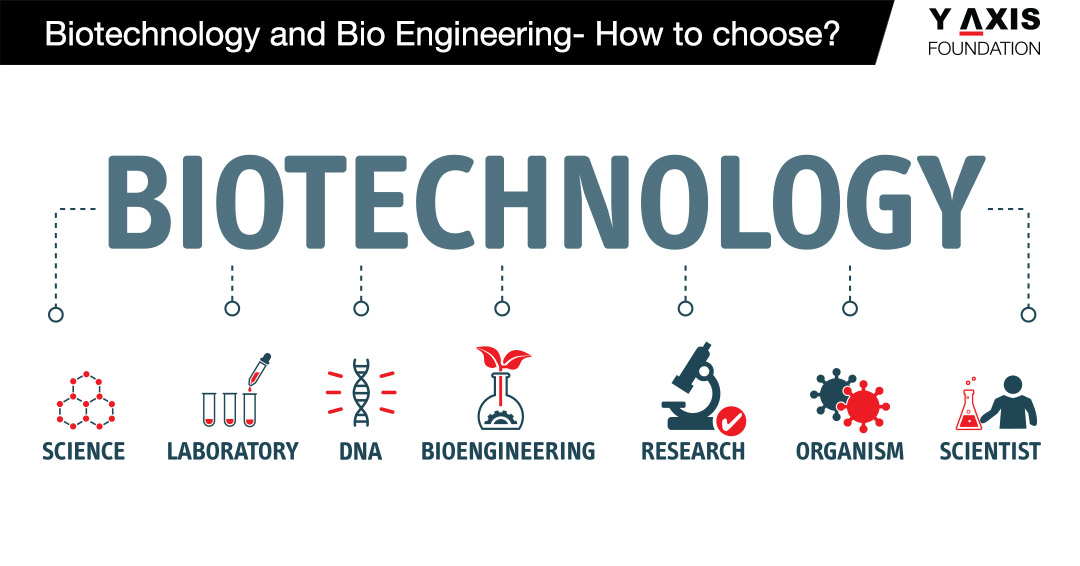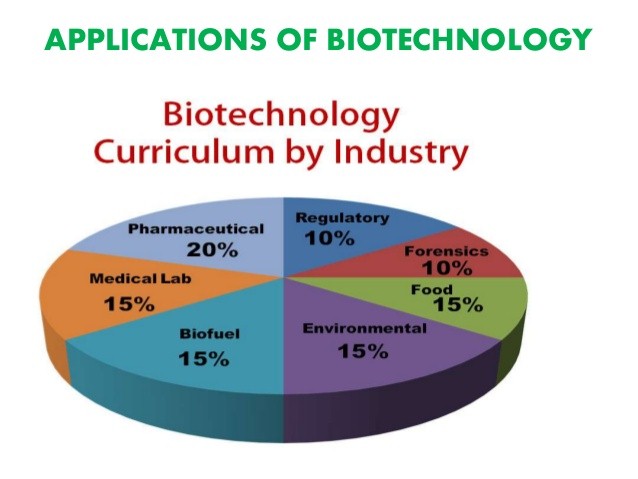CBSE Class 12 Biology Chapter 12 Revision Notes
Chapter 12: Biotechnology and Its Applications
Definition of biotechnology
- Biotechnology is an applied discipline of science that produces goods and processes from biological agents and their derivatives.
- These materials and techniques are used in medicine, pharmaceuticals, bioenergy, and environmental protection.

Types of biotechnology
Medical biotechnology: This field uses live cells to create technologies that benefit human health. Medical biotechnology has assisted in the development of vaccines and antibiotics.
Agricultural biotechnology: This field is associated with the synthesis of genetically engineered plants by integrating the desired gene into the plant. This, in turn, contributes to increased agricultural output.
Methods that utilize biotechnology
The three most important biotechnology approaches are:
- Recombinant DNA Technology (Genetic Engineering): This discipline deals with the manufacturing of artificial genes, the repair of genes, the mixing of DNA from two organisms (recombinant DNA), and the** manipulation of artificial genes in conjunction with recombinant DNA** for the betterment of microorganisms, plants, animals, and humans.
- Plant Tissue Culture: A process that allows plants to be saved from extinction and develop into full-fledged plants from a cell or a tiny plant portion. This process is known as tissue culture. Plants can be regenerated in a controlled laboratory environment from plant explants like root and shoot tips, buds, leaf, developing embryos, bud scales, and so on), tissue explants like pith, cortex, etc. epidermis, phloem, nucellus), and plant cells.
- Transgenic (Genetically Modified Organisms): Transgenics or GMOs are organisms that have been genetically engineered. Transgenic genotypes are those created through the genetic engineering method. It can be a plant, an animal, or germs like fungus, bacteria, or viruses.
Applications of biotechnology
Biotechnology is widely applied to develop helpful goods for human benefit in various disciplines such as medicine, agriculture, food processing, and so on. The primary biotechnology applications are as follows –

1. Biotechnology in medicine
- Biotechnology is used to produce medications that were otherwise difficult to produce conventionally due to purity problems.
- Initially insulin was extracted from the pancreas of cattle and pigs.
- Insulin is made up of 2 short polypeptide chains; chainA and chainB – linked together by disulphide bridges.
- In humans, the pro-hormone of insulin contains an extra stretch called C peptide. This is processed before it becomes a mature and functional hormone.
- In 1983, an American company made 2 DNA sequences corresponding to chain A and chain B of human insulin.
- This was introduced as plasmid in bacterium E. coli to produce insulin chains.
- The first clinical gene therapy was given in the year 1990 to treat a 4 year old child for ADA (adenosine deaminase) deficiency.
- ADA is usually cured by bone marrow transplantation, but with the advent of biotechnology, it can now be treated by enzyme replacement therapy.
- A functional ADA cDNA is introduced in lymphocytes of blood grown cultures via a retroviral vector.
- PCR and ELISA are important techniques using recombinant DNA technology that help in early diagnosis of diseases.
- ELISA is based on the principle of antigen-antibody interaction.
2. Biotechnology in various industry
- Biotechnology creates alcohol, detergents, cosmetics, and other items.
- Self-healing concrete, plants that change color when they sense an explosion, clothes and footwear made of synthetic spider web, and so on might all be available in the near future.
3.Biotechnology in agriculture
- In addition to genetically engineered foods, biotechnology has resulted in the development of crops resistant to droughts and certain insects that may prove critical in the battle against famine.
- A bacterium called Bacillus thuringiensis produces Bt toxin.
- Some strains of this bacterium produce proteins that kill certain insects.
- When the insect ingests the Bt toxin, the protoxin is converted into its active form due to the alkaline pH of the gut of the insect.
- It binds to the midgut epithelial cells and creates pores.
- Bt toxin is coded by the gene name cry.
- Its proteins are encoded by genes cryIAc which controls the comborer and cryIIAb which control bollworms.
4. Biotechnology for the environment
- Biotechnology is usually applied in the generation of energy.
- There is a need to seek an alternate source due to the depletion of natural resources.
- Biotechnology tools are used to create such fuels. These are environmentally friendly and emit no greenhouse gases.
- The catabolic characteristics of microbes, fungi, plants, and enzymes are exploited to rehabilitate damaged habitats via bioremediation processes, which are extremely beneficial for ecological recovery.
5. Applications in Forensic Science
- Forensic scientists employ biotechnology to gather or analyze trace evidence such as hair, skin, blood, or sperm samples found at crime scenes. Forensic DNA, or genetic markers, is a key part of contemporary forensics.
Multiple Choice Questions
-
________ links together the two polypeptides of human insulin.
-
Which of these is commonly used as a vector for introducing a DNA fragment in human lymphocytes?
-
In Bt Cotton, the Bt toxin present in plant tissue as protoxin is converted into active toxin due to__________.
-
The first human hormone produced by recombinant DNA technology is______.
-
Which of the following Bt crops is being grown in India by the farmers?
-
The first clinical gene therapy was given for treating__________.
-
Transgenic animals are those which have________.
-
Bacillus thuringiensis forms protein crystals which contain insecticidal protein. This protein binds with epithelial cells of midgut of the insect pest ultimately killing it.
-
Which one of the following is now being commercially produced by biotechnological procedures_________.
-
The first transgenic plant to be produced is__________.
